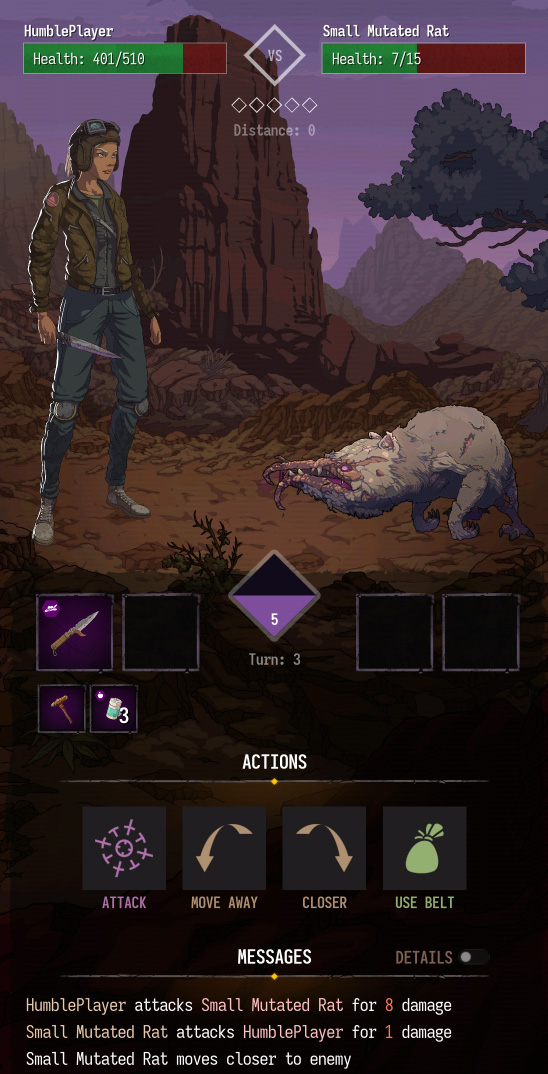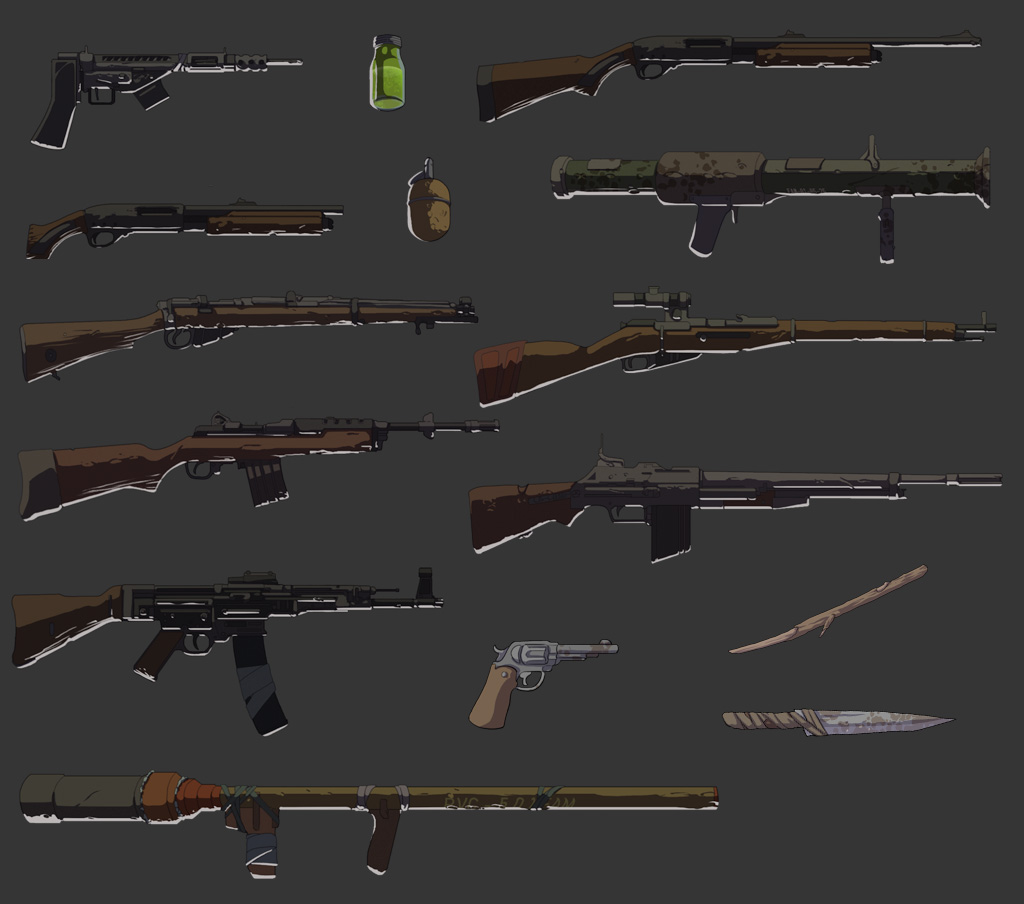The wasteland is unforgiving, and knowing how to fight and survive - can mean the difference between another day in the post-apocalyptic Southwest and becoming another casualty. Today we're breaking down Afterglow's tactical combat system, designed to reward preparation and smart equipment choices rather than button mashing.
Damage Types
At the heart of our combat system are six distinct damage types, each with tactical implications:
- Blunt: Hammers, sticks, and raw impact damage
- Slash: Knives, swords, and other cutting weapons
- Pierce: Bullets, arrows, and other penetrating attacks
- Explosive: Grenades and launchers
- Chemical: Toxic weapons
- Energy: Rare pre-war technology and experimental weapons
This isn't just flavor text - damage type interacts differently with armor systems, creating meaningful tactical decisions about what gear to bring into different encounters.
 Detailed fight messages during the fight
Detailed fight messages during the fight
Armor: More than just numbers
Our armor system goes beyond simple "higher number = better protection." Each piece of armor has:
- Armor Reduction (AR): Base damage absorption
- Prime Defense: The damage type this armor excels at stopping
- Weak Defense: The damage type that bypasses this armor easily
- Defense Modifier: Affects your ability to dodge attacks entirely
- Hit Penalty: How the armor restricts YOUR accuracy - heavy power armor might stop bullets, but good luck aiming precisely in that bulky suit
For example, that salvaged riot gear might give excellent protection against blunt trauma from raiders with pipes, but those same ceramic plates won't do much against a sniper's piercing rifle round. Meanwhile, that nimble leather jacket keeps you mobile and harder to hit, but won't stop much when it does connect.
Hit Calculation
When you pull that trigger or swing that crowbar, success isn't guaranteed. Our hit system factors in:
Your Attack Roll (2d10) + skill bonuses + weapon accuracy + situational modifiers - range penalties - your own armor's hit penalty
Vs. Target's Defense = Base defense (X) + armor bonuses + skill bonuses + situational modifiers
Critical hits happen two ways:
- Rolling double 10s (that perfect 1% lucky shot)
- Beating the target's defense by 8+ points (skilled, devastating strikes)
Critical hits deal 1.5x damage and in the future can trigger special weapon effects.

Damage Calculation
Once you've landed that hit, damage follows a straightforward but impactful formula:
Final Damage = (Weapon Damage + Skill Bonuses) × Critical Multiplier - Armor Reduction
This creates interesting scenarios: that pipe wrench might roll 8 damage, but if your opponent's wearing heavy armor with 6 AR against blunt damage, you're only dealing 2 points. However, if you scored a critical hit, that same 8 damage becomes 12 before armor reduction - suddenly you're dealing 6 damage instead of 2.
The system rewards both finding the right weapon for the job (pierce damage against heavy armor, energy against robotic enemies) and developing the skills to land those devastating critical strikes.
Range and positioning
Combat isn't just about having the best gun - it's about using it correctly. Every weapon has: Minimum, optimal and maximum range.
- You can't engage effectively beyond maximum range - it's automatic miss
- Beyond optimal range, you have accuracy penalty - but you can still hit
- Between minimum and optimal range, you have no accuracy penalty
- Below minimum range, you have accuracy penalty - but you can still hit
Your character automatically moves to usual optimal fighting distance. However some challenging PvE encounters might require you to move in ways you usually wouldn't. And of course PvP encounters will require you to be even more creative.
Weapon Categories
From improvised wasteland clubs to rare pre-war energy weapons, we are planning to launch with 16 distinct weapon types. Each fills a different tactical niche:
- Blunt/Sharp melee: Always ready, never runs out of ammo
- Pistols: Balanced, reliable sidearms
- SMGs: Close-range bullet hoses
- Shotguns: Devastating at short range
- Rifles: The workhorses of wasteland combat
- Assault Rifles: Versatile but resource-hungry
- Sniper Rifles: Precision at extreme range
- And more exotic options: Miniguns, launchers, chemical weapons...
 Tier 1 weapons drafts
Tier 1 weapons drafts
Equipment follows a tiered progression system where higher-tier weapons, ammo, and armor require advanced skills to use effectively. Beyond the standard tiers, each faction has developed their own specialized equipment with unique bonuses - exclusive gear that's only available to those who've built strong reputations within their ranks.
Ammo
In the wasteland, every shot counts. Same weapon types may have various ammo types dealing different damage types each suitable for their respective niche. Ranged weapons also have limited magazine capacity, and when you run dry in combat, your rifle becomes a very expensive club.
No "best" weapon
We are deliberately avoiding simple linear weapon progression. Instead, different weapons excel in different scenarios:
- Fighting heavily armored Hi-Tech Sentinels? You'll want armor-piercing rounds
- Clearing out a nest of lightly armored raiders? A shotgun's spread might be perfect
- Engaging deadly fauna at range? Time to break out that sniper rifle
Your gear choices should reflect your playstyle, your opponents, and the tactical situation - not just what has the biggest numbers.
In the upcoming weeks we will be adding new weapons and ammo types to the game, so we are looking for your help. Join our Discord to participate in Alpha testing, try new weapons, have fun and hopefully break the game a few times =)